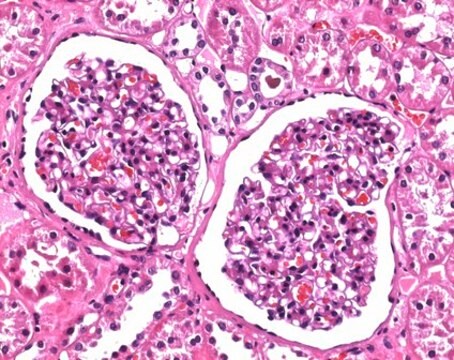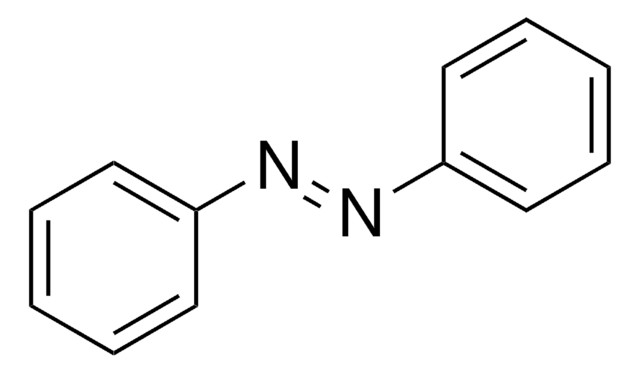441244
Paraformaldehyde
prilled, 95%
Synonyme(s) :
Polyoxymethylene
About This Item
Produits recommandés
Densité de vapeur
1.03 (vs air)
Niveau de qualité
Pression de vapeur
<1.45 mmHg ( 25 °C)
Pureté
95%
Forme
prilled
Température d'inflammation spontanée
572 °F
Limite d'explosivité
73 %
Pf
120-170 °C (lit.)
Température de transition
sublimation point 150 °C
Solubilité
alcohol and cold water: slightly soluble
ethers, hydrocarbons and carbon tetrachloride: insoluble
Densité
0.88 g/mL at 25 °C (lit.)
InChI
1S/CH2O/c1-2/h1H2
Clé InChI
WSFSSNUMVMOOMR-UHFFFAOYSA-N
Vous recherchez des produits similaires ? Visite Guide de comparaison des produits
Description générale
Paraformaldehyde is also referred as polyoxymethylene. It participates in the regioselective reductive coupling reactions of dienes, alkynes and allenes in the presence of ruthenium catalyst. It also participates in the synthesis of esters, via alkoxycarbonylation of alkenes.
Application
Caractéristiques et avantages
Decomposes in hot water to give formaldehyde.
Mention d'avertissement
Danger
Mentions de danger
Classification des risques
Acute Tox. 4 Inhalation - Acute Tox. 4 Oral - Carc. 1B - Eye Dam. 1 - Flam. Sol. 2 - Muta. 2 - Skin Irrit. 2 - Skin Sens. 1 - STOT SE 3
Organes cibles
Respiratory system
Code de la classe de stockage
4.1B - Flammable solid hazardous materials
Classe de danger pour l'eau (WGK)
WGK 2
Point d'éclair (°F)
Not applicable
Point d'éclair (°C)
Not applicable
Équipement de protection individuelle
Eyeshields, Faceshields, Gloves, type P3 (EN 143) respirator cartridges
Faites votre choix parmi les versions les plus récentes :
Déjà en possession de ce produit ?
Retrouvez la documentation relative aux produits que vous avez récemment achetés dans la Bibliothèque de documents.
Notre équipe de scientifiques dispose d'une expérience dans tous les secteurs de la recherche, notamment en sciences de la vie, science des matériaux, synthèse chimique, chromatographie, analyse et dans de nombreux autres domaines..
Contacter notre Service technique








